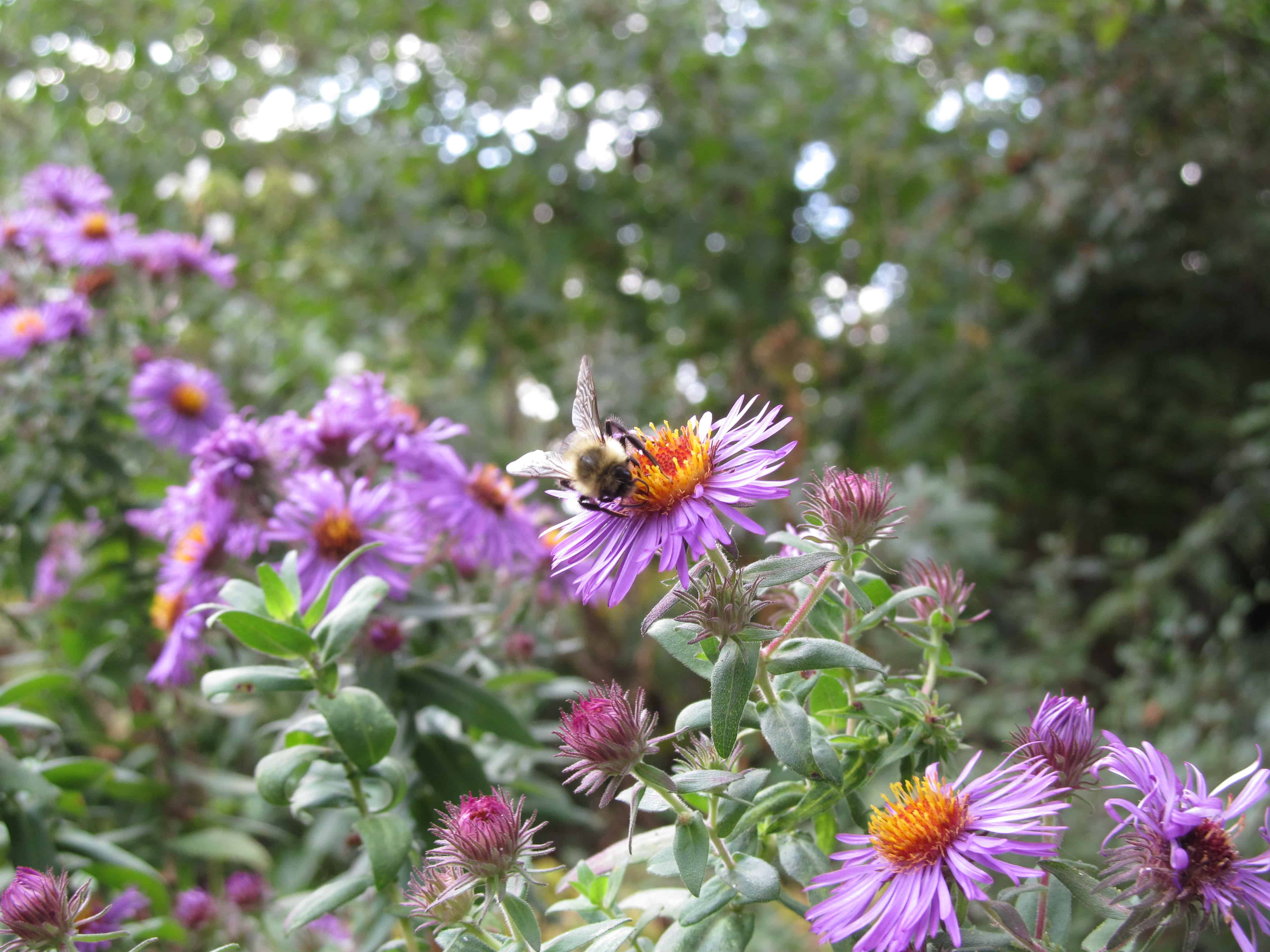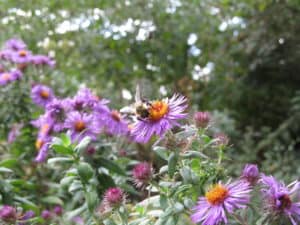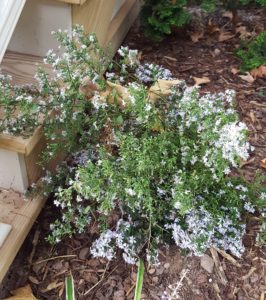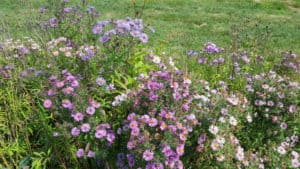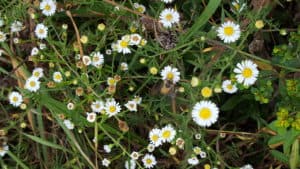Asters – Symphyotrichum and Eurybia species
Asters abound this time of year, whether planted intentionally or naturalized voluntarily. Unfortunately, taxonomist got their hands on Asters back in the 1990s, breaking them up and reclassifying the North American Asters with unpronounceable names. (I think they do it just to confuse us all!) Luckily, most nurseries either ignore the new names or put them in parentheses, so that we can still find these stalwarts of the fall garden.
Depending on the species, Asters are anywhere from 1 – 4’ tall. Flowers are small and daisy-like, attracting many different species of bees and other beneficial insects. They are also the larval food plant for a number of species of butterflies and moths. Colors can be white, blue, magenta, purple, and pink. Below are highlights of just a few of the many Asters you can grow.
New England Aster – Aster novae-angliae (now Symphyotrichum novae-angliae)
- 3 – 4’ tall native.
- Likes average soil in full sun.
- Deep pink-purple flowers, blooms 2-weeks.
- Ranked as a 3 star nectar and pollen source for honey bees, per Garden Plants for Honey Bees.
- You can prune these plants back in July to promote bushiness so they will not flop over.
- The cultivar ‘Alma Potschke’ has magenta flowers and a 2 star nectar and pollen ranking.
Smooth Aster – Aster laevis (now Symphyotrichum laeve)
- 2 – 4’ tall native.
- Likes average to dry soils in full sun.
- Violet to purple flowers.
- The cultivar ‘Bluebird’ was in the top 5 plants for sheer number of visits from bees and beneficial insects in the Penn State Pollinator Trial Garden insect study.
Blue Wood Aster – Aster cordifolius (now Symphyotrichum cordifolium)
- 1 – 3’ tall native.
- Likes average to dry soil in partial shade.
- Light blue-violet flowers.
- The flowers attract long-tongued bees, short-tongued bees, wasps, flies, butterflies, skippers, and beetles.
One to avoid when shopping for Asters is Aster ‘Purple Dome’ (now Symphyotrichum novae-angliae 'Purple Dome'). It had the LOWEST number of insect visits in the Penn State Pollinator Trial Garden insect study.
-Marie Rojas

